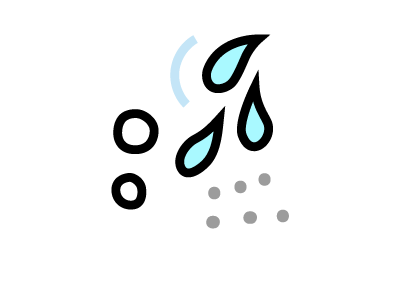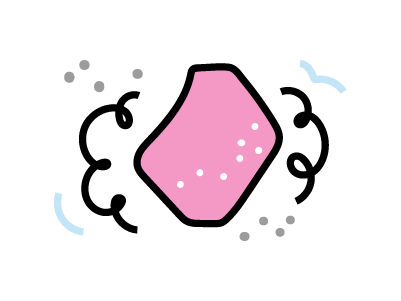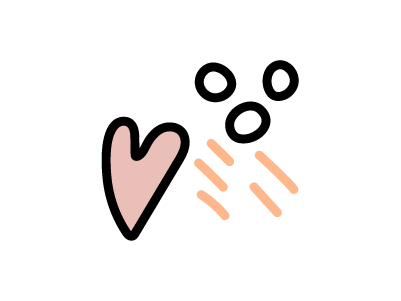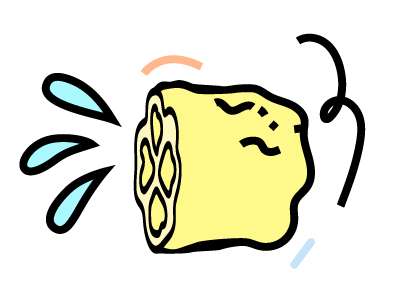Investing in a natural bath sponge can boost your skincare routine and has the potential to curate healthier skin.
Learn the ins and outs of caring for your own bath sponge and how to avoid the downfalls of a neglected shower pouf.
What Are These?
A loofah is a textured sea sponge-like made of natural plant fiber. Plastic, also known as synthetic variety are available too. To Loofahs means to scrub your skin and are used during showers or baths to scrub away layers of dead skin cells that can clog the pores if left unchecked. They can also be used to replace pot scrubbers or cleaning sponges.

Loofahs vs. Luffa – What Is a Luffa?
Loofahs come from the luffa plant, which is a tropical vine in the cucumber plant genus. Traditional ones originated in Japan but are now grown across the globe in temperate and welcoming climates.

What Are They Made Out Of?
Natural Loofahs
Natural loofahs are grown from the fruit of the luffa plant or Egyptian cucumber. The plant’s fibrous gourd grows from the vine in countries such as Egypt Bangladesh and left until they come mature and dry out fully. Afterwards, the sea sponge-like fruits are harvested and sold as an exfoliating or cleaning loofah.
Synthetic Loofahs
An alternative, usually sold as a “bath pouf” – you can find synthetic loofahs made of plastic material, silicone or rayon.

Types – Which Are Better To Use?
Natural Loofahs
Natural types are biodegradable, good for the ocean and have a much coarser texture than synthetic mesh poufs. If exfoliation or scrubbing is your main goal, then a natural one is particularly best.
Synthetic Loofahs
The mesh weave of a synthetic type is softer than that of natural ones. For very sensitive skin, this may be a better option. However, regularly disinfecting a loofah is important for your skin’s health, and you will find that a synthetic weave cannot withstand regular deep cleanings.
What’s the Best?
You may find the Heirloom Mayan Loofah Scrubbers by Clean Planetware to be a practical option. Wrapped up in compostable vegan packaging, these are used as flattened or cylindrical–whichever suits your needs.
The flatten shaped is useful for surface cleaning of tiles or tubs, while the expanded cylindrical loofah is easy to hold as you exfoliate in the shower. Immerse fully in water to watch each Scrubber expand.
Those who are green conscious will be pleased to know that no pesticides or herbicides are used in the growing of the Heirloom luffa crops. Heirloom Mayan Loofah Scrubbers are themselves vegan and compostable, too. Just bury each discarded Scrubber in your garden or green bin.
This sturdy exfoliant can withstand weekly disinfection with bleach or boiling water. With regular sanitation and care, these are reusable and each can last over a month.

They come in packs of six, so you can designate an individual one for each unique purpose:
- Cleaning surfaces in your bathroom.
- Scrubbing pots, pans and dishes in the kitchen.
- Exfoliating your skin while you bathe or shower.
Why Are So Good for Bathing With?
A loofah is nature’s perfect exfoliating tool. It becomes softer and more pliable when immersed in water, making the bath a good place to use a loofah.
This sea sponge-like webbing also enhances the bubbles of your body wash or soap as you work them in. Yours will help you get more lather out of less product.
Benefits of Having a Loofah
Exfoliating the skin is part of a healthy skincare routine. While a towel or washcloth can provide some exfoliation, a loofah does a much more thorough job because of its unique texture.
The natural fibers of the loofah remove dead skin and accumulated oil from the body’s surface. This will leave your skin feeling soft, fresh and like it can breathe freely.
Scrubbing the body with a loofah improves circulation – an essential for healthier, younger-looking skin.
If you’ve noticed a dull or flaking appearance to your skin, you’re probably due for an exfoliation.

How to Use a Loofah Properly
- Wet the loofah with warm water to soften its fibers. Thoroughly work the water in for optimal softness if you will be using it to exfoliate.
- Add a coin-sized amount of shower gel or drag your soap bar across its surface.
- Press the soapy loofah firmly against your skin and exfoliate the front of your body first, beginning at the neck and working your way down to the feet. For those with sensitive skin, it is best to scrub in a circular motion as this reduces the intensity of abrasion.
- Repeat exfoliation from top to bottom along the back of the body.
- Rinse the soap away from your body with tepid water to soothe your skin.
Popular Articles on ComproGear
Nurses Complete Guide to Compression Socks What Are The Best Compression Socks for Nurses?
Stop Foot Swelling Instantly Socks for Swelling Feet
Longer Length Compression Socks Guide to Compression Stockings Above Knee
The Perfect Fit? New Thigh High Compression Socks in 20-30 mmHg Compression
Should You Wear Compression Socks If You Sit All Day? The Desk Bound Guide
Instant Gout Relief with Gout Compression Garments
How to Store a Loofah Safely
Only store your scrubber away in a closet or cupboard once it is fully dry. Try storing them outside of your bathroom to protect it from exposure to moisture between uses. Setting it by a sunny window or a fan can ensure it keeps dry until it is needed again.

How to Clean a Loofah
Your bath scrubber will need proper care to keep it sanitary and extend its life. This will only take a minute after each use, though once per week a deep clean should be carried out.
After Each Use
- Rinse them with hot water, squeezing them repetitively until all of the soap is gone.
- Run these under hot running water once more.
- Squeeze out excess water.
- Set them out to dry in a room with reasonable airflow, or at the very least outside of the shower. Speeding up the drying process helps prevent
- bacteria growth, so try placing your bath scrubber by an open window or under a fan.
Once a Week Deep Clean
Statistics have shown that disinfecting your bath scrubber weekly will prevent the buildup of harmful species such as bacteria. Even a well-dried loofah can be susceptible to contamination. You have several options for the weekly deep clean, and all of them are simple:
- Add the loofahs to your weekly load of laundry, but do not run it through the machine dryer.
- Put the loofahs in the dishwasher next time you turn it on.
- Leave them to sit in boiling water for 5 minutes.
- Create a mixture of water and ten percent bleach. Allow the loofahs to soak in the bleach mixture for 5 minutes, then rinse thoroughly with cool water and hang to dry.

When to Replace
These are reusable, however, it is best to replace your exfoliator once every three to four weeks.

Can You Share?
Research has found that each person in a household should always use a separate scrubber to avoid spreading harmful species such as bacteria. Swapping these can actually put immunosuppressed housemates at risk of infection. A wise customer should know all of this!

Are These Unsanitary?
A poorly kept scrubber can become a haven for bacteria as these are compostable and biodegradable. Many of us become lazy and leave ours in the shower, sitting in a pool of water until we use it next. But they need care, just as our clothing or homes need regular upkeep.
With so many benefits, learning how to care for one properly is worth it. Adopt these simple tips to keep your loofah sanitary so your skin can keep getting the loofah love it deserves:
- Rinse, squeeze and thoroughly dry your scrubber after each use. The less time it remains damp, the less chance it has of harboring bacteria.
- Never use your partner’s or a family member’s loofahs. Your exfoliator should be yours and yours alone.
- Do a deep clean once per week with a bleach soak or a run through the washing machine.
- Don’t store your scrubber in the shower between uses.
- Replace loofahs every three to four weeks. Not to worry, as these are biodegradable and compostable.

Risks If Not Stored and Cleaned Properly
A neglected scrubber can become home to central bacterias like E. coli or pseudomonas aeruginosa. Yikes! It only takes a few seconds to rinse, squeeze and set yours out to dry, so don’t risk it. Take good care of your scrubber and you’ll enjoy the benefits they are renowned for.
Where To Buy the Best
A well-cared-for loofah will reward you with fresh, flake-free skin like those of an Egyptian God. For a good deal that is both ethical and environmentally friendly, check out the manufacturer from Heirloom Mayan Loofah Scrubbers by Clean Planetwar. They’re sold in multipurpose packs of six that are safe to use for either exfoliation or hard surface cleaning. Grab these in wholesale too, and share with your friends and family. Do not hesitate to connect with the customer service team for further queries.

This page last updated October 25, 2022